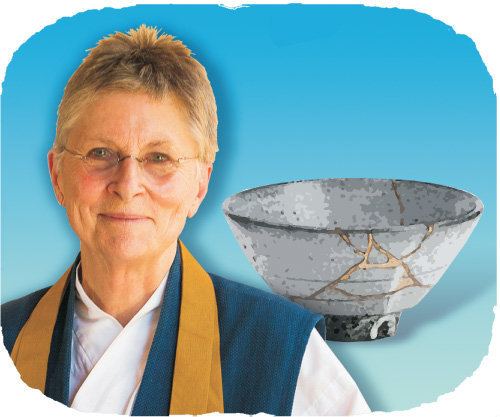The metaphor of broken pottery
The metaphor of broken pottery
Posted December. 28, 2022 07:42,
Updated December. 28, 2022 07:42

Some people are talented at moving the hearts of others with apt metaphors. Joan Jiko Halifax is one of them. A student of Master Seungsahn, a globally renowned Zen Buddhist monk, and a respected medical anthropist, her metaphor of Kintsugi is oddly convincing.
As widely known, Kintsugi is a Japanese art of repairing broken pottery. It is a restorative craft using lacquer to mend the broken parts and make it whole again with gold powder. Kintsugi does not cover up the damage; it reveals and gives a new identity to the pottery, creating a new conception of beauty where the item remains the same yet not the same anymore.
Halifax uses Kintsugi as a metaphor for life. To her, the restored version of pottery represents the spirit of a human that is weak and incomplete yet beautiful and strong at the same time. No matter how harshly it may have been broken, the spirit can be more beautiful and even stronger as long as one can put it back together. Of course, this is not applied to all types of scars one must bear, as it would be too cruel for those shackled by an unbearable weight of emotional wounds. There should be so much damage one can handle for patchwork.
Her metaphor is, if anything, a message of encouragement that under the right circumstances, scars and pains can be an opportunity to hone the greater skill to stand unwavering in the face of headwinds. Just like broken pottery, there are no undoing emotional scars. Still, those scars may serve as a hallmark of uniqueness that allows one to blossom into a human being with differentiated beauty and values.
Halifax, who enjoyed visiting Japan, finds the possibility of recovery from the vivid scars of broken pottery and its unfaded beauty. If one is destined to sustain scars, people should not try to hide or run away from their scars. One should strive to “repair” them to become a stronger and more valuable existence. A truly heart-warming metaphor with such illuminating wisdom.







